This book provides a unique point of view on how spirituality is strongly connected to sustainability.
Asia is gripped by a crisis of modernity. Rampant development, as exemplified by the modern Asian mega-metropolis, is heralded as a symbol of progress. This is the conventional vision of the future, and one that is deeply unsustainable. We live in the shadow of a deepening ecological crisis; lives and livelihoods are increasingly threatened by climate change and environmental degradation. We seem to be at an impasse.
But perhaps we already have solutions to this current crisis embedded in the traditional cultures and cosmologies of the region, and other trajectories of development we could follow.
M. Nadarajah’s timely new book explores the living ecological traditions of various Asian indigenous communities, and the ways in which environmental management grows out of their cosmologies and is built into their spiritual practices. Here, we are offered a glimpse of alternate pathways to the future; a form of sustainability built not on economic development, but on a deeply sustainable form of living that takes its lessons from traditional cultures and cosmologies.
Do we need to develop to be happy? Can there be non-materialistic development? In discarding our traditions, are we also discarding our future? These are some of the questions the book explores through its encounters with traditional Asian cosmologies.
Richly illustrated with photographs by the author, this book should be of interest to all those passionate about ecology, nature and the environment, sustainability, spirituality, Asian traditions, and Asia’s future.
For more about the book, see the Living Pathways website.


Foreword
In this book, Nadarajah examines sustainability in a deep spiritual sense with a strong understanding of the subject matter. His research has taken him to many different Asian communities and locations. In this text, he has compared and commented on Asian cultures and traditions where sustainability is embedded as a way of life and has made significant reference to the Muslims, Buddhists, Shintoists, Catholics and Hindu spiritual writings. Nadarajah has reflected on his own personal journey, which has been filled with rewarding experiences. This journey served as the main impetus for him to seek out the sustainable pathways taken by human beings in this material world, ever since globalization and capitalistic economies have become the norm. Nadarajah examines some of the major factors that have eroded sustainable traditions and cultures in Asia and makes an insightful thesis that spirituality and sustainability are two sides of a single reality.
In the chase to reach developed nation status in the 21st century, many Asian countries who subscribed to the sustainable development principles as engraved in the Brundtland Commission of 1987 and Rio Summit resolutions of 1992 have now replaced sustainable practices and traditions with regard to natural resource management with that of a Western ideology of sustainable development in keeping up with Western counterparts.
All the 7 billion people of the world have only one single Planet where we can live and perpetuate, and that is our precious Mother Earth. The rate of extraction of natural resources by Man far exceeds the rate of natural replenishment of these resources by natural biological and physical processes. Mother Earth is giving us signs and warnings that ‘business as usual’ will not do. We are NOT taking heed of the critical signs because we are too busy running our daily lives in a competitive world where increasing material wealth is seen as good and right. But the sad fact is that there is no social equity in the quest for sustainable development. We are really not bothered about other human beings who are far more disadvantaged than us in the social and economic perspectives. Members of the same human race do not care for one another!
This book provides a unique point of view on how spirituality is strongly connected to sustainability. The cosmologies of sustainability in many Asian indigenous communities are nurtured by the triangular relationship of the human world (human beings), the natural world (natural resources) and the spiritual world (God and other spiritual beings).
This book is a must read for all. It is written in a simple style, yet has many references to Asian cultures and spiritual aspects on a subject matter that ‘matters’ to 7 billion of us on Planet Earth: living a sustainable life that conforms to our spiritual traditions and beliefs.
Sundari Ramakrishna, Ph.D., Conservation Director, WWF (World Wide Fund for Nature) Malaysia, Kuala Lumpur


About the Author
M. Nadarajah, or ‘Nat’, earned a Ph.D. in Sociology from Jawaharlal Nehru University (JNU), New Delhi, in 1993. His doctoral thesis was published in 1999 as Culture, Gender and Ecology: Beyond Workerism. Nat has spent his life working on the interconnected issues of communication, process development and management, culture, spirituality and sustainability. He has written several books on these issues: Another Malaysia is Possible and Other Essays: Writings on Culture and Politics for a Sustainable World (2004) and his co-edited book Urban Crisis: Culture and the Sustainability of Cities (2007) are noteworthy contributions. He is one of the pioneers of the Global Centre for the Study of Sustainable Futures and Spirituality (GCSSFS, www.gcssfs.org). In 2005, Nat became an Asian Public Intellectual (API) Fellow, sponsored by the Nippon Foundation. This allowed him to embark on a research ‘pilgrimage’ that inspired the meditations presented here in Living Pathways.
About the Book
Globalisation and technological progress have ushered us into a new era of development. Never before has the promise of the ‘Good Life’ in a hedonistic, consumerist utopia, been within reach for so many. Yet a significant portion of humanity is still unable to meet their basic needs. These trends are unsustainable, and beg the question: Where are we heading as a global community… and at what cost? In 2005, M. Nadarajah embarked on a journey into the heart of Asia to research culturally imbedded notions of sustainable development. He met with the indigenous communities of the Henanga, Ainu, Lanna, Karen, Kankanaey, Balinese and several others. These cultures reside far from the problems of mainstream development, both physically and spiritually. Their lifestyles incorporate philosophies of interconnectedness; of the sacredness of nature; of the continuity of Past, Present and Future. Rather than offer notions of sustainable development, these life-affirming philosophies pave a pathway towards a deep sustainability. On this path, we find answers to how we must change as a society in order for us to preserve our world for all future generations. But do we have the collective will to overcome our consumptive habits and start living responsibly? Living Pathways offers its readers a chance to meditate upon these questions. It provides meaningful directions towards the spiritual paths of sustainable communities we often take for granted. Above all, it shows the reader a picture of the world we live in as it could be, if only we choose to make it so.
Reviews
“I…read Nat’s thirty-two Meditations very carefully, pausing after reading each one to reflect on the profound insights and messages contained therein, as well as learning that each meditation possessed powerful ideas and evocative images with respect to the world of the future and the role that sustainable cultures and cosmologies in Asia can play in this. This enabled me to see that these meditations – indeed the entire book including the Appendix – lead us to a world that is far more in keeping with the emotional, sustainable, and spiritual requirements of the future than the physical, material, and technical demands of the present…It is one of the most far-sighted, thoughtful, and moving statements I have ever read on what is wrong with the current world system and what is required to set things right.” D. Paul Schafer, Director, World Culture Project, Canada
“I love how Nat takes us on his path, as he talks with villagers, academics, elders, and politicians. His journey brought me to realize, as he did so poignantly, that I can no longer think of “sustainable development” as if it were a nice project for someone else to take up in the future, but that I, like every other human being, embody Spirit and Nature, and the many questions the book raises are ones that Ineed to answer. Responsibility, as the “ability to respond,” is something which I need to own.” Ben Bernstein, Ph.D, Clinical Psychologist, Educator and Author (USA)
“M Nadarajah shifts the focus of alternative thinking—from sustainable development to sustainable cultures of living and uses Asia as his field of study. Nadarajah examines in this book the Asian obsession with acquiring “developed nation” status that is in reality a copy of the West and the corporate agenda of putting profit first and consumption as the most important marker of happiness and development. In the critique that he mounts against this neo-liberal doctrine, Nadarajah falls back upon the wisdom and lifestyle of those whom modernity has marginalised in the developed world and brings onto the forefront several aspects of life that have been suppressed, forgotten and consigned to a hoary past. Such wisdoms are seen as belonging to an archaic past that must be transcended for modernity to deliver a better life. Nadarajah finds a treasure trove of stories of wisdom that have been made “redundant” by a lifestyle that premises itself on science and technology. This lifestyle, Nadarajah would argue, is antithetical to good living.” Surajit Mukhopadhyay, a sociologist based in Kolkata
“Living Pathways has contributed to the present reservoir of knowledge in a simple, lucid way.” D.K. Budokoti, Development Consultant (India)
“Nadarajah’s book offers deep insights worth engaging with at both personal and political levels.” T.K. Nair, PhD. Professor of Social Work, former Principal of Madras School of Social Work (MSSW)
“The book, appropriately titled the Living Pathways, is a journey and a “research pilgrimage” searching for answers to sustainability, among people who are less touched by the glitter and glamour of the urban way of life… The book, in short is inspiring, it combines intellectual acumen and scholarship with emotional insights and sources into a seamless narrative.” Review by Associate Professor Kiranmayi Bhushi, School of Social Sciences, Indira Gandhi National Open University, New Delhi
“A new thing said in a new way… As you look through the photos of Living Pathways, you sense that someone is making images. The author is an iconographer.” Comments on M. Nadarajah’s Living Pathways by Gaston Roberge
Contents
List of Figures and Tables
Dedications
Foreword
Acknowledgements
The Search for Meaning: A Personal Journey
Ways of Reading the Book
An Issue of Concern for our Collective Reflection and Meditation
Meditations
Some Features of the Asian ‘Cosmology of Sustainability
Going Beyond?
Afterword
Appendix
Antecedent
Roots
Antecedent Roots 1
Bibliography and References Index 2
List of Figures and Tables
Meditations
Figure 1: Spirituality and Sustainability are ‘Two Sides’ of a Single Reality Figure
Figure 2: Engaged Buddhism and Catholicism Figure
Figure 3: Maintaining a Cosmology of Sustainability: The Triadic Relationship of Fundamental Realities Figure
Figure 4: The Notion of Limits (according to the Kankanaey People)
Figure 5: Individuals as Cultural Beings: The Asian Notion of Personhood
Figure 6: Consumption Orientation, Then and Now
Figure 7: Sustainable Co-evolution
Antecedent Roots 1
Table 1: Stages of Ecological Consciousness and Activism
Table 2: Types of Sustainability and Their Concerns
Table 3: Sector and Media Type
Figure 1: Species (Individual/Community/Species) Contextualisation
Figure 2: Value Focus
Figure 3: Three Imaginative Orientations
Figure 4: Values-Vision Relationship and the Location of the Media
Figure 5: Media, Social Criticisms and Social Learning Loops
Figure 6: Media Reforms for a Sustainable Society





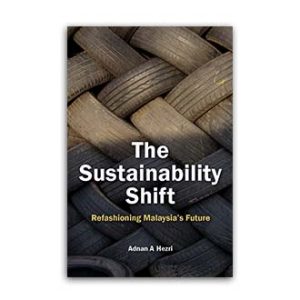
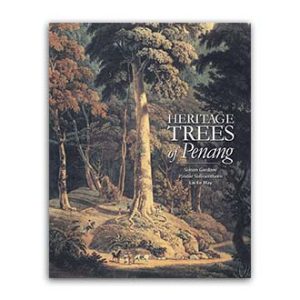
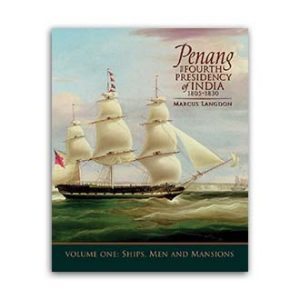
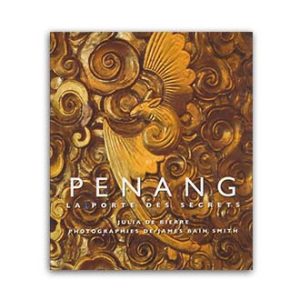

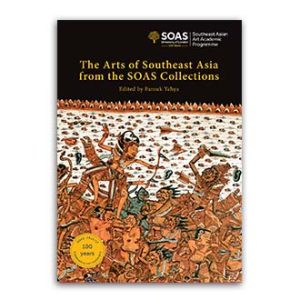
Reviews
There are no reviews yet.